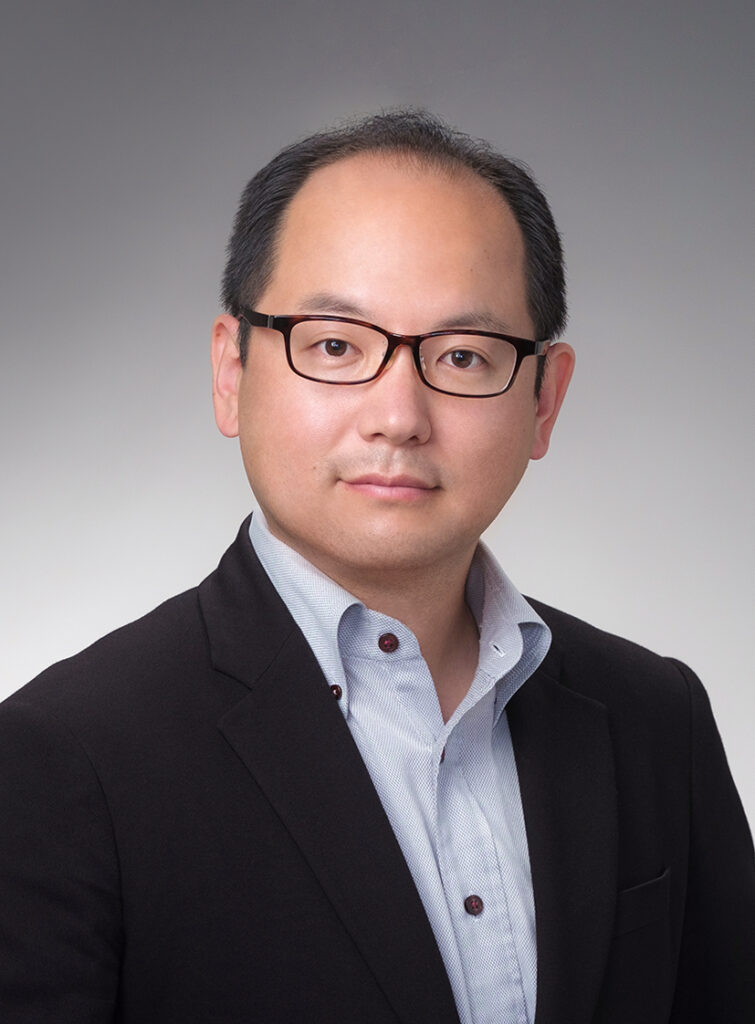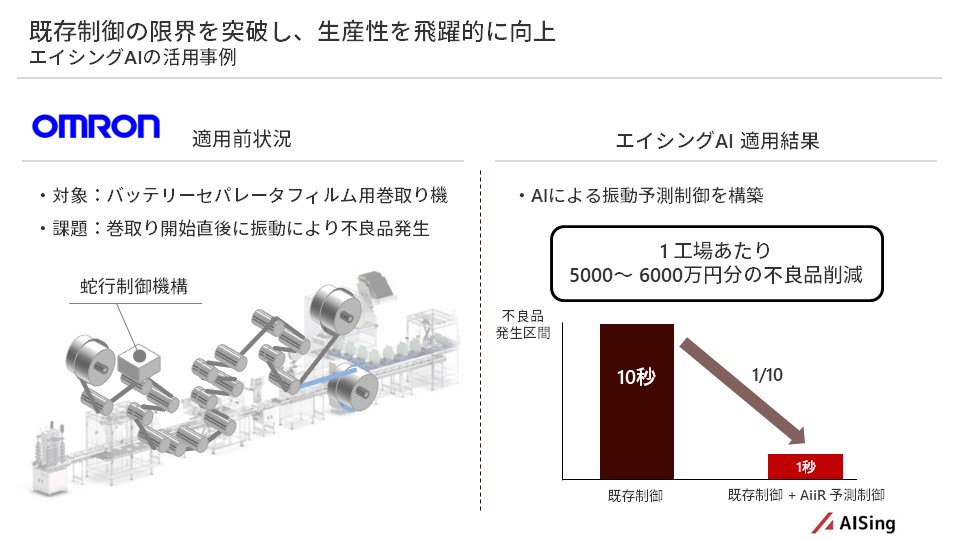Mr. Jun-ichi Idesawa, CEO of AISing Ltd.
Many companies have done everything possible to improve productivity and reduce costs. AISing, Ltd. Is delivering extraordinary results to companies that have felt like they’ve already done all they can. We spoke with Mr. Jun-ichi Idesawa, the CEO of AISing, Ltd., about the benefits of adopting its world-leading edge AI technology*.
―Could you tell us about AISing Ltd.?

We provide licenses for edge AI and consultation on adopting AI. Our greatest asset has been the development of AI installed in microcomputers and similar systems that are greatly constrained by hardware.
I graduated from a department of mechanical engineering, where I learned the fundamentals of thermodynamics, control engineering, and metal composition. After that, I joined a robotics lab at graduate school and began studying artificial intelligence. As a result, my expertise is in a new type of field that combines information engineering, or AI, and mechanical engineering.
This specialty is directly reflected in AISing. I have been studying in this field for about 18 years.
―Please tell us about what motivated you to start the business.
I was also studying AI at Hirameki Co., Ltd., the company from which AISing was spun out. At the time, we obtained a large loan from a major bank, and the person at the branch of the bank in charge of our account encouraged us to participate in the accelerator program, Mirai 2017, organized by The Japan Research Institute, Limited. This led me to start the business.
―What are you working on now?
What I can openly talk about is that we have a royalty licensing agreement with OMRON Corporation.
I believe this is probably the first licensing agreement for AI algorithms in Japan, ahead of other AI vendors.
We also sell to production facilities regularly.
Our edge AI is different from what most people think of when they hear “edge AI.”
Usually, what is called “cloud AI” is given all the capabilities of learning and prediction on the cloud side and performs processing through communication. However, this involves communication costs. So, the capabilities are separated into the predictions on the device side and the learning on the cloud side. This is why common edge AI was created.
Our edge AI is called endpoint AI. It enables both learning and prediction on the device side, isolated from the internet. Furthermore, it allows inexpensive devices, now not just large and expensive hardware, to perform both functions.
Few companies in the world are good at this endpoint AI.
―Where does your difference from the other companies come from?
I guess the point is that our strength is not limited to AI development.
As I said earlier, we have great knowledge of mechanics. Also important is our embedded technology, which is for semiconductors and other devices and another of our great strengths. Our specialty is in the area where these three meet.
Our solutions with the most potential include the introduction of AI in machine control, anomaly detection, and soft sensors. Another technology we’re working on is implementing the “Craftsman’s Intuition” into equipment parameters. This technology corrects individual differences in equipment in ways that that can reproduce expert, human craftsmanship.
I really feel there is a strong demand for these four things: machine control, anomaly detection, soft sensors, and parameter optimization.

―So what exactly can you do with those?
For OMRON, our AI has been used in its manufacturing equipment to control lithium-ion battery separator films.

This process involves two films, top and bottom, that are crimped and reeled. The reel speed is quite fast at2 meters per second. In this process, the films begin vibrating laterally immediately after the start of reeling, so defective products would be created if the batteries and films were to be stuck together in such a state.
It normally takes 10 seconds for conventional controls to suppress this vibration. Since the reel speed is 2 meters per second, the company had to discard 20 meters of the films every time the switch is turned on.
So, we retrofitted our AI to the conventional control block. We were able to suppress the vibration in just a single second, reducing waste disposal to one-tenth. This led to an annual cost reduction of between 50 million yen and 60 million yen for one plant alone.
―I imagine it’s very convenient to be able to retrofit conventional lines.
That’s right. In addition to being able to be retrofitted, our AI can continue to learn after installation.
For example, our AI uses a camera and sensor on site to recognize whether there are minute gaps in production and, if it finds any, provides feedback. In that moment, it learns and makes corrections to itself, which is something it can do continuously.
If there are skilled craftsmen, it can copy their movements to make the line smarter and smarter. Even after automation, it can continue to improve its accuracy.
We have filed dozens of patents for this technology, including international applications, and have never failed to obtain them.
This is an area of technology where we are the only true player right now.
―Companies seek to reduce costs and improve productivity, but I think unless they understand their circumstances properly, they won’t realize their problems in the first place. In what cases are customers willing to adopt your technology?
First of all, almost all of our customers are highly competent. Most of them are keenly aware of their problems.
We often find that our budgets do not match those of clients who only have vague ideas about the technology, like “We want to use AI” or “We want to increase productivity.” In other words, they don’t understand how much of an advantage our technology offers.
Even when I explain that only we have this technology, some say that they will obtain quotes from other companies.
On the other hand, companies like OMRON that have already done everything they can do are likely to make a very quick decision. Knowing the limitations of the capabilities of existing AI, they often quickly decide to adopt ours, commenting that they have been waiting for this kind of technology. After the adoption, they even increase the deployment of the technology throughout their companies.
―Is it better suited for industries with higher unit prices?
Indeed, if we spend a lot of labor hours, the customer will need to secure an annual budget from several million yen to 50 million yen.
However, even companies with low unit cost products can be profitable if they have many factory lines.
In terms of costs, we can allow customers to pay on a pay-for-performance basis. For example, if their annual cost savings indicate that they can break even in two or three years, they can pay in a lump sum calculated by multiplying the annual savings by two years and by the number of lines in the first year.
Through this form of payment, customers only incur a cost for the development labor-hour portion.
I think our technology is worth consideration even by companies dealing with low unit cost products, depending on their scale, of course.
* Edge AI technology: A technology to install AI in terminals (i.e., edges) themselves. It enables terminals to perform processing on site without sending data to the cloud.
| Company Name:AISing Ltd. |
| Founded:December 2016 |
| Main Businesses:Developing edge AI-based algorithms, conducting joint development with leading companies, licensing edge AI, and providing consultation on adopting AI URL:https://aising.jp/en |
This article is part of a series of articles introducing venture companies working together as ICF members to resolve societal issues.





